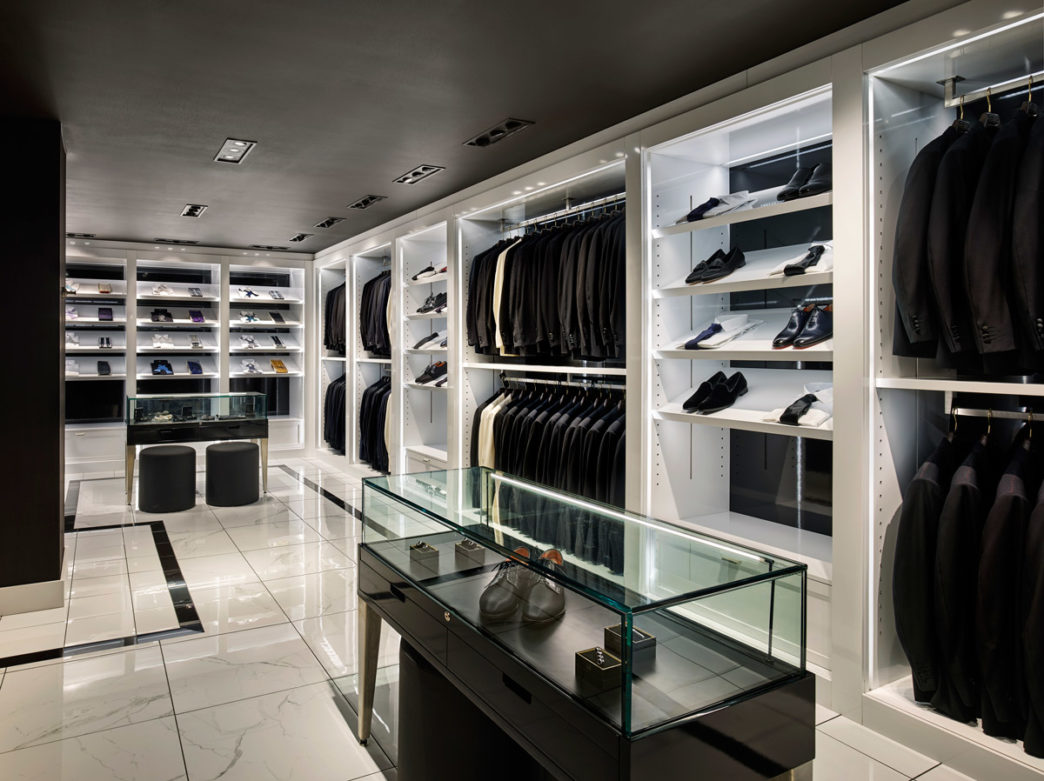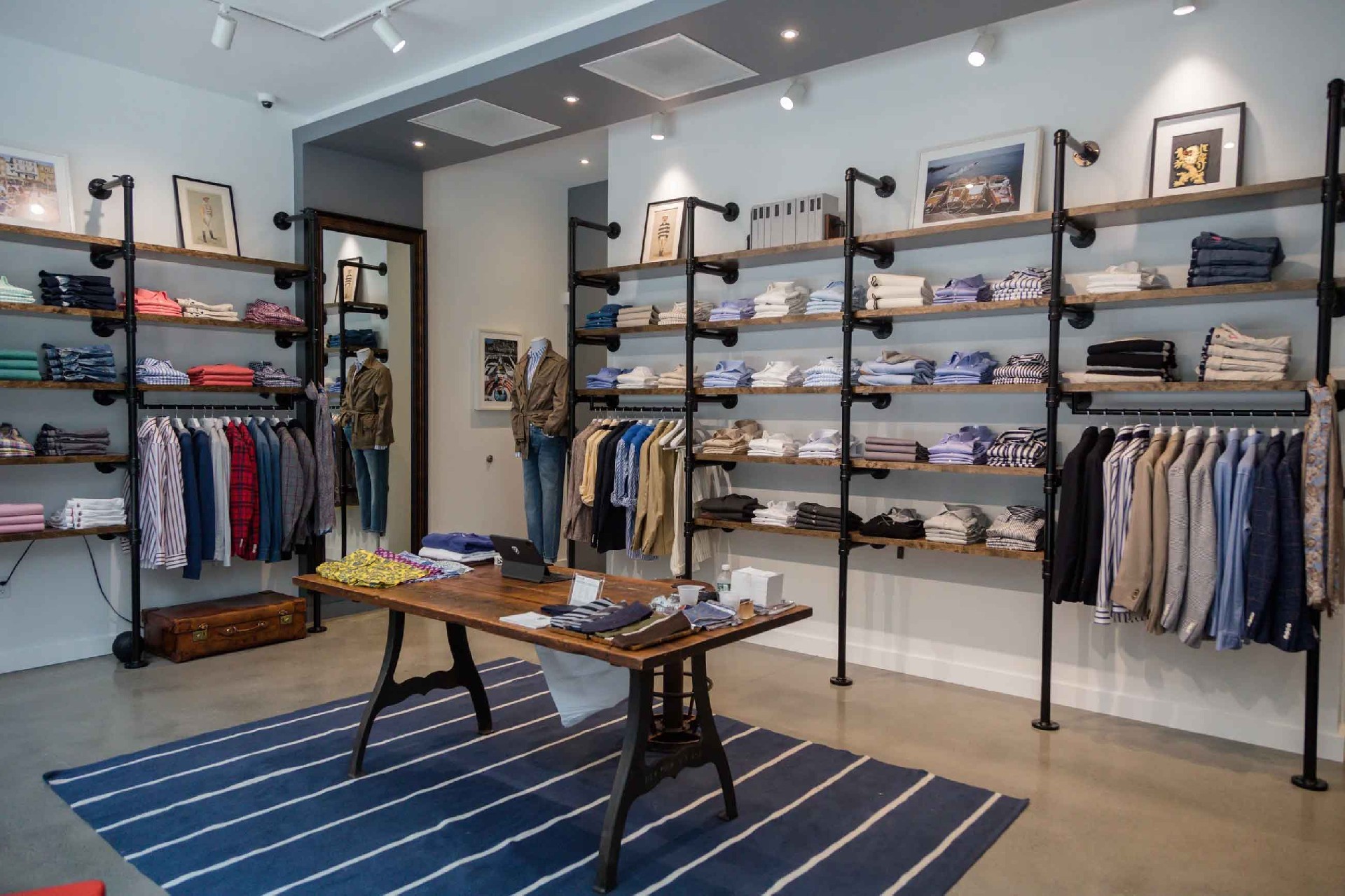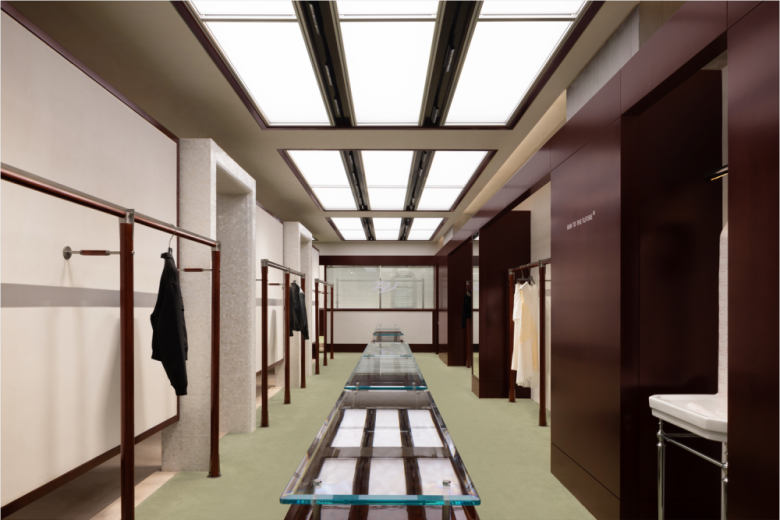In high-end retail environments, circulation design is a refined discipline that blends psychology, aesthetics, and commercial logic. For suit retail stores in particular, every step a customer takes subtly shapes their emotional experience and purchasing decisions. A layout that is both scientific and elegant not only enhances spatial efficiency but also infuses the brand with a flowing sense of narrative, turning the act of shopping into an immersive journey.
The “golden circulation” principle lies at the heart of effective circulation design. From the very first step inside the store, spatial rhythm and visual guidance should lead the customer naturally toward key areas. The sense of openness at the entrance is critical—it serves not only as a welcoming gesture but also as a psychological buffer zone. This area can feature a brand identity wall, seasonal highlights, or limited-edition collections to establish an immediate visual impression. From there, the main aisle should flow in graceful curves or well-considered turns, guiding the customer through product categories in sequence—from business formalwear to casual suits, and finally to accessories and footwear—forming a complete product story chain.
The relationship between primary and secondary aisles is equally important. The primary aisle carries the brand’s main displays and storytelling, while secondary aisles offer moments for exploration and pause—such as curated focal zones, exclusive limited-edition areas, or coordinated outfit displays. This approach not only prevents congestion but also provides different circulation choices for customers with varying purchase intentions.
Creating rhythm within the space is the soul of premium circulation design. Thoughtfully placed “pause points” and “transition zones” encourage customers to slow down and appreciate details. These can be achieved through focused lighting, changes in materials, or strategic furniture placement. Aligning pause points with higher-margin products—placing them within both the customer’s line of sight and their psychological peak of attention—can significantly increase conversion rates.
Fitting room circulation strategy is another critical factor. In luxury suit retail, the fitting process often determines the final purchase decision. The fitting area should be located in the mid-to-late stage of the circulation path, balancing privacy with visual connection to main display areas. Surrounding the fitting zone with complementary styling displays and seating areas extends customer dwell time, increases comfort, and opens opportunities for cross-selling.
The checkout area must balance efficiency with an emotional closing touch. Positioning it at the natural end of the circulation path allows customers to complete their purchase and exit seamlessly. Surrounding the counter with small, high-quality accessories caters to impulse buying. In high-end suit retail, the checkout space can also host member services and after-sales consultation, continuing the brand’s attentive care even after the transaction.
From a visual merchandising perspective, circulation design should integrate with a cohesive language of lighting, color, and materials. Lighting directs the gaze, color helps zone the space, and material transitions signal functional shifts. For example, moving from an open display area to a private fitting room might be accompanied by a floor change from polished stone to soft carpet, with lighting transitioning from bright spotlights to warm diffused light—subtly creating a sense of safety and comfort.
In line with modern luxury retail trends, circulation design is increasingly integrating digital and interactive elements. Features such as digital concierge screens, virtual fitting mirrors, and intelligent lighting systems transform circulation from a fixed path into a responsive, personalized journey that adapts in real time to customer interests and behaviors. This flexibility not only adds a sense of novelty but also strengthens the brand’s sense of modernity and competitive differentiation.
Ultimately, the circulation design of a suit retail store is far more than a matter of spatial route planning—it is a deep integration of brand storytelling and commercial conversion strategy. A carefully crafted circulation path subtly guides customers from emotional appreciation to rational purchase, allowing them to experience the brand’s sophistication and sincerity within a seamless flow of space.






